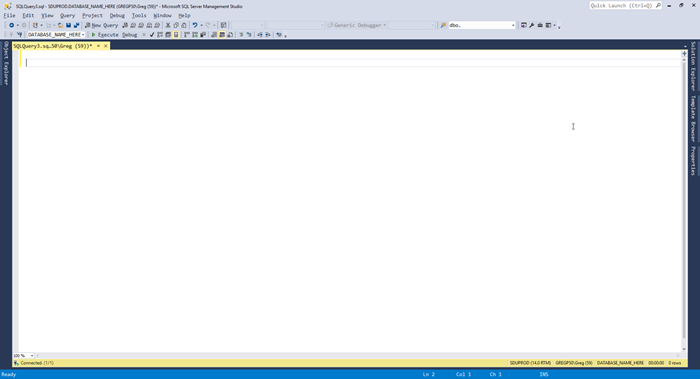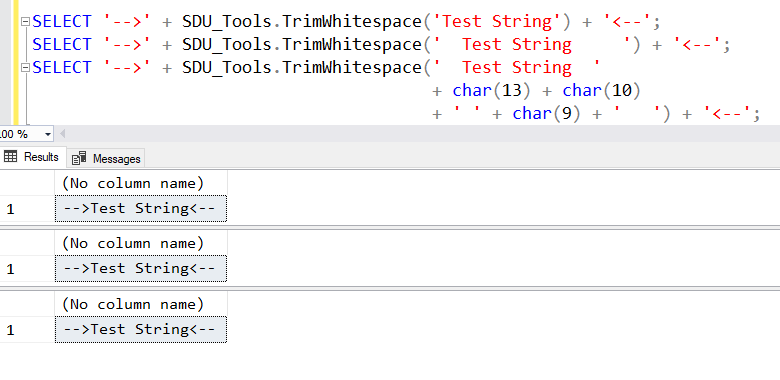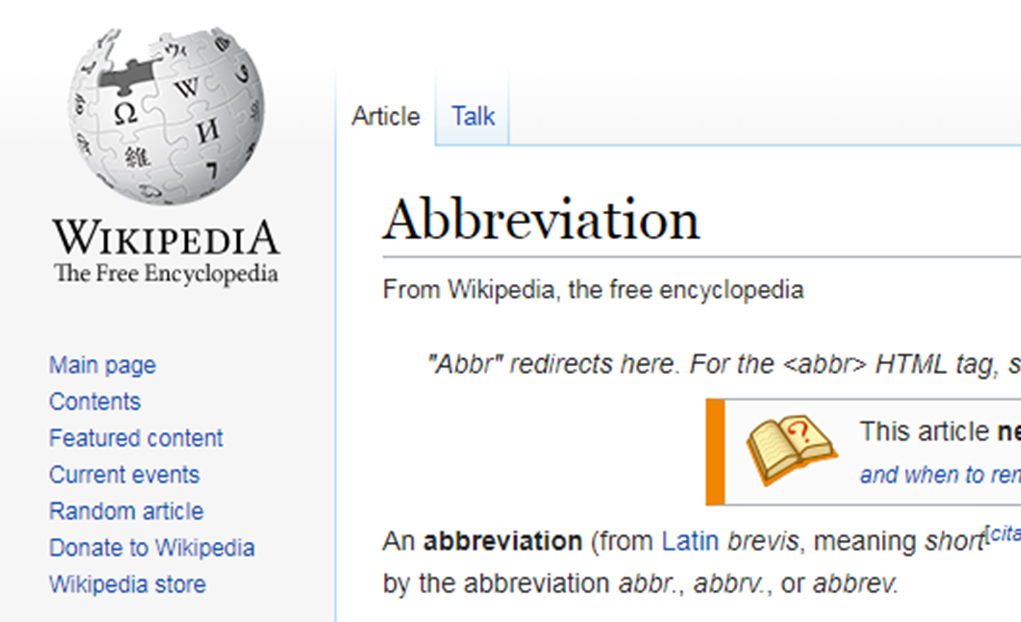
Shortcut: Toggle Full Screen Mode in SQL Server Management Studio (SSMS)
SQL Server Management Studio (SSMS) is a great tool and it has lots of helpful menu items and toolbar items. Unfortunately, all these items take up screen real estate.
You can see that the default screen layout could be considered a bit cluttered if you really just want to focus on the particular query that you’re working on.

A keyboard shortcut can help here. Alt-Shift-Enter toggles full screen mode in SSMS.
2018-02-01









